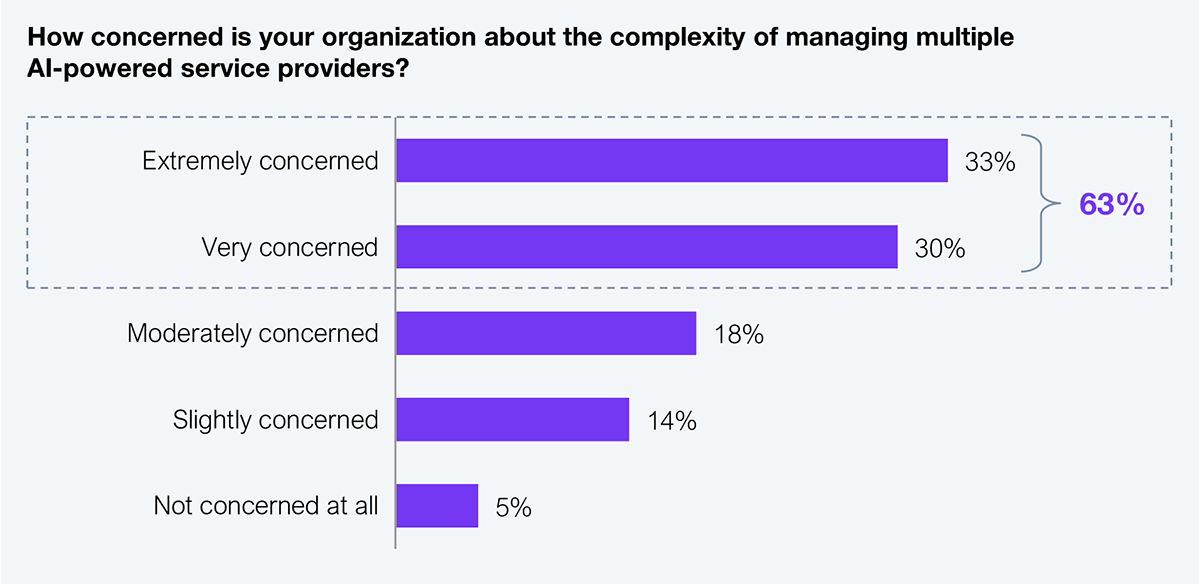The first wave of enterprise AI adoption has been loud, fast, and mostly uncoordinated. One team builds a pilot on OpenAI, while another experiments with Claude through Slack. Meanwhile, compliance, legal, and IT are left to figure out how these pieces fit together.
The result is an orchestration problem—not just technical sprawl, but policy confusion, overlapping spend, redundant tools, and unclear accountability. What began as innovation quickly became unmanaged complexity. Enterprises aren’t struggling to build agents; controlling them is the challenge.
That’s the gap Airia is working to close: orchestration of agents. Airia isn’t looking to reinvent how agents are built, but focuses on making them operationally viable. Its core value lies in helping enterprises manage, audit, and scale agent-based systems across complex environments.
Most AI initiatives today are disconnected. HFS Research data shows that 63% of enterprise leaders are highly concerned about managing multiple AI-powered vendors and platforms (see Exhibit 1). These concerns go beyond security or cost—they’re structural. Besides oversight, enterprises lack a common layer for visibility, control, and policy enforcement across their expanding AI landscape. Shadow agents, redundant licenses, and inconsistent compliance reviews have now become business as usual. This isn’t a tooling gap—it’s a coordination failure.

Sample: 1,002 survey participants
Source: HFS Research, 2025
Airia’s approach isn’t just about building more agents, but about helping enterprises build and manage them in a structured, accountable way. The platform supports orchestration across models and vendors, enables security and policy controls, and provides a centralized view to manage agent lifecycles, usage, and performance. Critically, it doesn’t lock enterprises into a specific model or framework. This vendor neutrality is part of its strategic relevance.
What makes Airia notable isn’t just its growth—it now supports more than 400 enterprise customers globally, translating orchestration from an abstract need into a usable platform. Its core capabilities include:
A financial services customer used Airia to consolidate contract reviews across business units. A legal agent flagged language deviating from approved templates, reducing cycle time by 70%. In pharma, Airia helped build an outbound communication compliance agent that auto-flagged regulatory risks and routed them to legal, shifting oversight from reactive to real-time.
Airia’s alignment with emerging standards such as A2A (agent-to-agent communication) and MCP (Model Context Protocol) positions it as more than just a platform. It’s setting the groundwork for interoperable agent ecosystems that prioritize trust and observability.
Enterprises are moving past isolated AI experiments and into complex environments with real stakes. That shift exposes a structural gap—how to coordinate, govern, and measure agent-driven systems. Airia is not claiming to solve AI. It is one of a few early-stage players aiming to make AI usable and accountable at scale.
For enterprise leaders, the signal is clear: orchestration is becoming core infrastructure. Ignore it, and innovation becomes risk. Build it, and AI becomes operational.
Register now for immediate access of HFS' research, data and forward looking trends.
Get StartedIf you don't have an account, Register here |
Register now for immediate access of HFS' research, data and forward looking trends.
Get Started